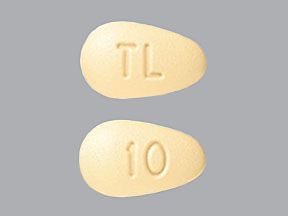Vortioxetine Disease Interactions
There are 5 disease interactions with vortioxetine.
Antidepressants (applies to vortioxetine) suicidality
Major Potential Hazard, Moderate plausibility. Applicable conditions: Depression, Bipolar Disorder
Antidepressants increased the risk of suicidal thoughts and behavior in children, adolescents, and young adults in short-term trials; these trials did not show increased risk in patients older than 24 years and risk was reduced in patients 65 years and older. Adult and pediatric patients with major depressive disorder may experience worsening of their depression and/or the emergence of suicidal ideation and behavior (suicidality) or unusual changes in behavior, whether or not they are taking antidepressants; this risk may persist until significant remission occurs. Suicide is a known risk of depression and certain other psychiatric disorders; such disorders are the strongest predictors of suicide. Patients of all ages treated with antidepressants for any indication should be monitored appropriately and observed closely for clinical worsening, suicidality, and unusual changes in behavior, especially during the first few months of drug therapy, and at times of dose changes. Family members/caregivers should be advised to monitor for changes in behavior and to notify the health care provider. Changing the therapeutic regimen (including discontinuing the medication) should be considered in patients whose depression is persistently worse, or who are experiencing emergent suicidal thoughts or behaviors.
Antidepressants (applies to vortioxetine) angle closure glaucoma
Moderate Potential Hazard, Moderate plausibility. Applicable conditions: Glaucoma (Narrow Angle)
Some antidepressants exert mydriatic activity that can induce increased intraocular pressure and result in angle-closure (narrow-angle) glaucoma in a patient with anatomically narrow angles who does not have a patent iridectomy. Prior to initiating therapy with these agents, patients should be examined to determine whether they are susceptible to angle closure, and have a prophylactic procedure (e.g., iridectomy), if they are susceptible. The use of these drugs in patients with untreated anatomically narrow angles should be avoided.
Antidepressants (applies to vortioxetine) bleeding
Moderate Potential Hazard, Moderate plausibility.
Some antidepressants should be administered with caution in patients with an increased risk for hemorrhage. Patients should be advised to immediately report any signs and symptoms suggestive of bleeding complications, including ecchymosis, hematoma, epistaxis, and petechia.
Vortioxetine (applies to vortioxetine) hyponatremia
Moderate Potential Hazard, Moderate plausibility. Applicable conditions: Dehydration, SIADH
Treatment with vortioxetine may cause hyponatremia, in many cases secondary to development of the syndrome of inappropriate secretion of antidiuretic hormone (SIADH). Caution should be used when treating patients with hyponatremia or at greater risk of developing hyponatremia such as elderly patients, patients taking diuretics or those who are volume-depleted.
Vortioxetine (applies to vortioxetine) mixed/manic episode
Moderate Potential Hazard, Moderate plausibility. Applicable conditions: Depression, Bipolar Disorder, Mania
Therapy with vortioxetine may cause activation of mania and hypomania and should be used with caution in patients with personal or family history of mania, hypomania, bipolar disorder, and other mood disorders.
Switch to professional interaction data
Vortioxetine drug interactions
There are 357 drug interactions with vortioxetine.
Vortioxetine alcohol/food interactions
There is 1 alcohol/food interaction with vortioxetine.
More about vortioxetine
- vortioxetine consumer information
- Check interactions
- Compare alternatives
- Reviews (1,580)
- Side effects
- Dosage information
- Patient tips
- During pregnancy
- Support group
- Drug class: miscellaneous antidepressants
- Breastfeeding
- En español
Related treatment guides
Drug Interaction Classification
| Highly clinically significant. Avoid combinations; the risk of the interaction outweighs the benefit. | |
| Moderately clinically significant. Usually avoid combinations; use it only under special circumstances. | |
| Minimally clinically significant. Minimize risk; assess risk and consider an alternative drug, take steps to circumvent the interaction risk and/or institute a monitoring plan. | |
| No interaction information available. |
See also:
Further information
Always consult your healthcare provider to ensure the information displayed on this page applies to your personal circumstances.


